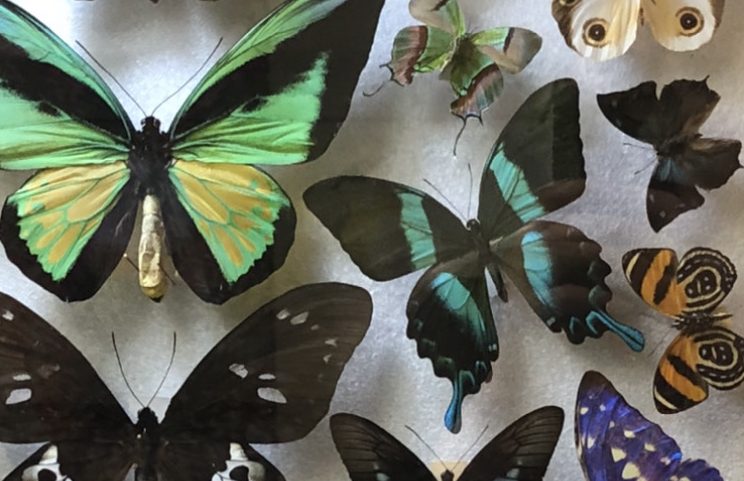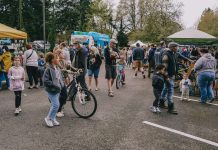In the fall of 2019, Seattle’s famed Burke Museum of Natural History opened its doors after a lengthy period of remodeling. While the excitement over the exhibits was well justified, it is far from the only local place with collections of creatures to enjoy. In fact, another natural history museum exists right here in Tacoma, and it offers a unique perspective on regional biodiversity. Located on the University of Puget Sound campus, the Slater Museum of Natural History gives visitors the opportunity to engage with extensive collections of local specimens – and thanks to its community outreach programs and educational infrastructure, it also presents unique chances to engage with its collections.
The Slater does not necessarily fit the traditional museum mold. It may not have towering dinosaur skeletons or massive exhibitions, but it offers ample opportunities to engage with the Pacific Northwest’s ample wildlife. As Peter Wimberger, the museum’s current director put it, “We do what we do, and we do it well.”
The Museum’s History
The museum has three main people to thank for its establishment – James R. Slater, Gordon D. Alcorn and Murray L. Johnson. Slater started the collections in 1930 as he collected reptiles and amphibians for his research and teaching, Slater’s specialty. Not unlike the actual evolutionary tree, the collections soon expanded. Alcorn started the bird collection in 1934, while Johnson started the mammal collection in 1946. Johnson, a noted regional mammologist, built the collection to over 30,000 specimens during his tenure. The men established a connection between the museum and academia that continues.
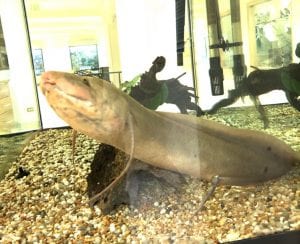
Wimberger is part of the same long tradition of educators-turned-curators. He originally came to the college to teach in the biology department, a position that he holds to this day. When Dennis Paulson retired from the director position in 2005, Wimberger was tapped for the role due to his work at other museums. Coming from this background, he was well aware of the uniqueness of this museum. “It’s one of the only research collections in a liberal arts college,” he said.
Regarding the museum inventory, Wimberger said, “It grew out of the research of the people who were teaching here,” adding that it was a central part of the department throughout the 1940s and 50s, until cellular and molecular biology moved to the forefront. In the 1990s, more concentrated efforts were made to modernize and utilize the collections. The Slater, in fact, was one of the first places to digitize its catalogue of specimens, a common practice for museums today.
It was also during this time that they began to focus more intentionally on educational outreach. As Wimberger explained, they focused on a simple but challenging question; “What’s the place of a natural history museum on a liberal arts campus?” Eventually, they concluded, “We really needed to increase our visibility” in the community, and they began focusing more on public outreach programs. The result is a full spate of offerings both in the museum and out in the community.
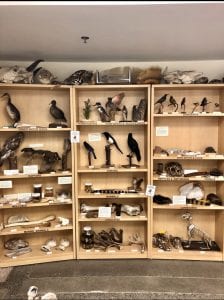
Programs and What to Expect
Although the museum is currently closed to the public due to the COVID-19 pandemic, it has offered a variety of popular series in the past. Drawing Night, where community members bring their art materials and sketch specimens from the collection; Nights at the Museum, which are open houses centered around various themes; and Nature In The Classroom, a hands-on program in which museum staff visit classrooms for hands-on lessons in scientific inquiry. Each series offers a wide array of activities and lessons, all designed to allow guests to engage with the collections in a deeper way. Whether throwing a birthday party for Charles Darwin, creating artistic renderings of differently patterned beetles, or learning how to keep a naturalist notebook, community members of all ages are encouraged to explore the museum’s offerings in-depth.
Within the museum, there is also a push to illustrate the research utility of the collections. While Wimberger said that visitors are often somewhat interested in the specimens, he wryly added that “[People are] creeped out by dead birds.” One of his personal goals – and that of the museum – is to demystify these specimens and demonstrate the stories they can tell about our impacts on the world. They have been used to study pollution trends (by tracing the mercury levels in red hawks over the past century), genetic variation, and even shifts in the food chain based on the amount and type of stable isotopes in the feathers of seabirds. “There are all these uses of museum specimens that were undreamed of 50 years ago,” he explained.
They also focus on humans’ innate interest in nature. “Every animal has a story,” Wimberger explained, adding that even when they’re dealing with less traditionally lovable creatures like ticks, “We’re fascinated at some level.”
Operating on this principle, the next curriculum from the Slater will spotlight the most populous and least popular of the animal groups: bugs. They are currently developing a new curriculum based around insects that will be aimed at an audience younger than their usual crowd (fourth and fifth graders) in hopes of catching them at the right juncture of curiosity and open mindedness to get them truly invested in the fate of these valuable creatures.
Docents at the Museum
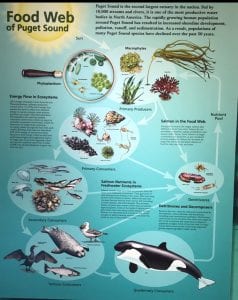
The Slater’s commitment to education is internal as well. All of the docents are students at the college. Many of them are studying the sciences, and the program offers valuable hands-on experience. “This is a place where they can practice teaching to a wide audience,” Wimberger explained.
The docents get to be extremely involved. In addition to leading tours and presenting specimens, they plan the themes for the Night at the Museum events, lead talks and learn about best museum practices. Many of them go on to work in science education. Outside of the docent program, students also utilize the collections for research. Current projects include analysis of feather structure, species hybridization and plastics found in seabird cadavers.
Some of them continue to work in the museum after college, such as current Education and Outreach Specialist Tiare Gill. Others, such as Education and Outreach Coordinator Matthew Naffziger, come to the museum through the AmeriCorps program. When they talk about their work, they emphasize the excitement and value of bringing these lessons to the public.
For Naffziger, the Nature in the Classroom program has been a particular favorite because it allows students to directly engage with specimens from the museum’s collections, while simultaneously learning good scientific practices. “It’s always fun to be in a classroom and get kids hands-on thinking about science,” he said.
Gill recalled that when she was an AmeriCorps member, she brought some lessons to an elementary school in Hilltop that had been traditionally underserved in the sciences. One student was so excited, Gill remembered, that he went to the library after class, checked out a book on fossils, and later gave a presentation about some specimens in his collection. As she explained, “They can tackle the skills we give them…and really apply them outside the lesson.” The department is currently focused on expanding the curricula they offer both in terms of age range and available tools as well as continuing to increase the collaboration with artists in the community. “Finding ways to connect science with art is really our focus this year,” Gill explained.
COVID-19 Online STEAM Resources
The Education and Outreach team is currently developing a virtual Nature in the Classroom lesson series for parents and teachers looking for online STEAM materials for students in virtual learning. Keep an eye on the website, Instagram, and Facebook page for updates and links to online science and art resources.
The Education staff also compiled a video series of Nature in the Classroom lessons. Normally an in-classroom lesson for 4th and 5th graders, The Slater organized these virtual lessons so that they retain their hands-on feel while minimizing the materials required.
Links to all three videos:


































